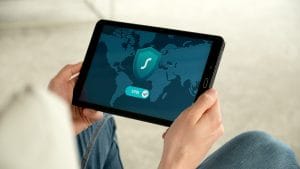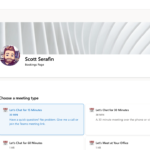You might have heard a new term floating around the small business world recently: “DEX”, short for Digital Employee Experience. This is a direct offshoot of the new digital workplace, hybrid work models and post-pandemic business environment of partially and fully-remote companies. According to recent studies, remote work is here to stay (and will grow in 2023). Data scientists at Ladders predict that 25% of all professional jobs in North America will be remote by the end of 2022. With this dynamic shift comes the need for new standards for the employee experience – which is where DEX comes in.
What is the Digital Employee Experience?
According to AIHR, the “Digital employee experience (DEX) is a reflection of how effectively people interact with their workplace digital tools, which allows them to be engaged, proficient, and productive.”

AIHR states that DEX includes all of the digital interfacing employees are doing from day to day, using technologies for:
- Workflow and productivity (project management, analytics, customer relations)
- Communication and collaboration (email, instant messaging, phone calls, video conferencing)
- Learning (official trainings and professional development)
- HR systems (self-service access to policies, compensation, PTO, and performance management information, etc.)
In a traditional workplace, managing the employee experience in these areas would be based more on interpersonal and face to face communication like HR meetings or in-person training, physical spaces like break and meeting rooms, and physical equipment such as desk phones, paper calendars, memo pads, server rooms and cubicles. This might also look like a member of the IT department walking over to your desk or printer to troubleshoot.
Think of how each of these translates and changes as employees shift to remote environments – and the new experiences that wouldn’t even exist without a digital format – that’s DEX.
Qualtrics defines the key elements to consider when designing your company’s DEX as:
- Performance of devices and programs: How fast are they? Are they well configured to enable employees to do their work?
- Reliability of devices and programs: Do applications crash? Do computers slow to a crawl to the point where they need to be restarted frequently? Do work-issued mobile devices connect seamlessly to the company VPN?
- Mobility: Do work-related tools enable employees to effectively work anywhere?
- Collaboration: Do programs enable employees to effectively collaborate with their team members? Do they boost productivity? Do they help with business success?
Why should your business think about DEX?
Bottom line – people want to get their work done, and they want to get it done seamlessly and effectively. When employees are struggling daily or weekly with disruptions, crashes and slowdowns in their digital workplace, productivity declines sharply and employee frustration rises in tandem.
As hybrid work becomes more common and employees operate from a variety of devices and environments, it’s becoming even more challenging for managers and business owners to keep a grip on the digital workplace.
DEX is not only how employees experience and interface with technology itself, but also how the IT team works with the business and individual employees to address issues and service tickets, implement new technologies, train employees, and collaborate with employees.
What can you do to improve DEX at your workplace?
You can build a comprehensive DEX solution for your team through a variety of solutions. At Sparrow Tech, we already have partnerships with a variety of product vendors that offer different suites of solutions for designing your DEX. Having your IT partner build this from the ground up ensures you are taking the most strategic approach to not only creating and implementing your DEX but monitoring and remediating issues on an ongoing basis.
According to VMWare, a holistic solution requires four integral components: Experience Delivery, Analysis, Experience Measurement and Remediation. Options like VMWare offer a one-stop shop for securing the hybrid work environment and implementing tools and platforms that effectively allow for an “Anywhere Workspace”.
A proactive DEX approach in tandem with a trusted IT partner like Sparrow Tech helps increase employee communication, maximize visibility for IT into digital workplace issues in real-time, and allows monitoring and remediation before the digital employee experience starts to fall apart.



